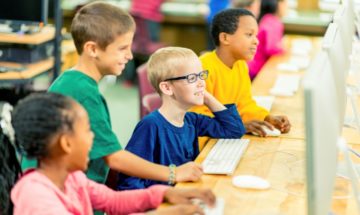Topic: Teaching & Learning

Suggested Reading
Can schemes to inspire tomorrow’s scientists close the poverty attainment gap? Pallavi Amitava Banerjee, The Conversation Pallavi Amitava Banerjee shares her research in response to the many government-backed initiatives put in place to interest more young people interested in STEM subjects. The article provides explanation on the importance of diversity... Read the full article >

Broadening Students’ Participation in STEM
The importance of STEM education can be seen in the growing number of STEM-related occupations in the United States and abroad. In fact, in the U.S., 80 percent of the fastest growing jobs depend on a mastery of mathematics and scientific knowledge and skills. In contrast, interest in STEM careers... Read the full article >

The “E” in STEM: Explicitly Teaching Engineering
STEM has emerged as the educational priority of the 21st century, in that it aims to link deeper student learning with real-world connections and critical thinking. Literally, STEM stands for science, technology, engineering and mathematics. Across the educational system, however, there are a wide variety of interpretations and multiple meanings... Read the full article >

Enhancing K-12 Curriculum with STEM Integration
As the accountability stakes continue to grow for school districts, more and more time is spent on developing students’ language arts and math skills. Knowing that schools and districts who earn high ratings/grades attract more students and positively impact a community’s economic value, districts feel forced to narrow curriculum and... Read the full article >

How Do We Improve Elementary Math Education? It Starts in High School.
Like me, most middle and high school mathematics teachers are keenly aware of our role in preparing the next generation of STEM professionals—engineers, health care workers, biologists, chemists and statisticians. However, few of us spend much time thinking about how we prepare the most influential STEM professionals of all: elementary... Read the full article >

If You Want Better Collaboration Around STEM, Build Infrastructure
The structure for collaboration between STEM teachers already exists at most schools. The most recent Teachers Know Best survey suggests that upwards of 68 percent of teachers have dedicated collaboration time with peers. However, the same data suggests that this time is not well used, with only 7 percent of teachers... Read the full article >

Learning in 3D: Making STEM Real
My six year-old nephew wakes up on a Saturday morning and plays Lego Star Wars on the Wii. He enters the sprawling 3D world of the game. He flies, drives, walks and jumps through it. He interacts with hundreds of objects. He understands scale, importance and each object’s relationship to... Read the full article >

Systematic Change in Education Begins with a New Vision for Professional Development
In his now-classic book The Fifth Discipline, Peter Senge describes systems thinking as a “discipline for seeing wholes.” It is a framework for seeing interrelationships rather than things, for seeing patterns of change rather than static snapshots. “Systems thinking,” Senge writes, “offers a language that begins by restructuring how we... Read the full article >

Redesigning Teacher Preparation Today for the Classrooms of Tomorrow
Seemingly everything about our schools is changing as America shifts from a national, analog, industrial economy to a global, digital, information economy–demographics, technology, curriculum, standards and testing. The skills and knowledge students need, as they compete for jobs with peers from around the world, have risen to the highest levels... Read the full article >
